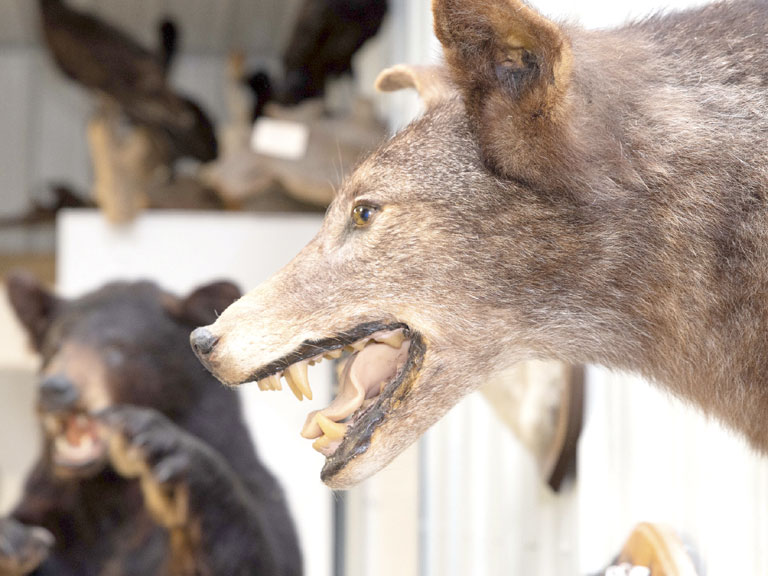County News
The deVries Collection

Ameliasburgh Museum’s new display of natural heritage
The Ameliasburgh Museum is now the permanent home of possibly the most extensive private collection of taxidermy in Canada. The collection belongs to the family of the late Jake deVries. When his widow, Johanna, died in 2017, their children, John deVries and Jane Moon, honoured their mother’s wishes by cooperating with museum staff and a team of volunteers to prepare a permanent home for the collection at the Ameliasburgh Heritage Museum. Curator Janice Hubbs is delighted to have this collection at the museum, where she says it’s a good way for the public to find out about the natural heritage of the County. “We have a heritage village here and we talk about ‘things’, but now it’s appropriate to talk about the animals that lived here, and the stories that they have to tell about how things have changed with their habitats in the local area,” she says. “The subject of conservation is always on the mind of a museum person, so we kind of have to keep the story of it going for the next generation.”
Jake deVries emigrated from the Netherlands to Canada in 1948, working first as an indentured farm labourer. He was fascinated by songbirds in his adopted country and in 1950 he made his first attempt at preservation with a cowbird recovered from a Wellington roadside. Eventually Jake found a job in the tomato canning industry, rising to the position of foreman. He enrolled in a correspondence course in taxidermy at the Northwestern School of Taxidermy in Omaha, Nebraska, eventually obtaining a degree in 1960. He and Johanna settled down in Bowerman’s Corners to raise their family, and over time Jake’s collection expanded to fill a remodeled carport adjacent to their house. Although Jake was a hunter and fisherman, he considered taxidermy as a way to present the beauty of nature. Many of his specimens came from the Ministry of Natural Resources after officers confiscated game that was poached or hunted out of season. He was often called upon to use his skills as a way of preserving evidence for use in a later trial. Afterwards, the specimens would be used for educational purposes in schools or with courses at the MNR. Many of his songbirds came from around local lighthouses, where the birds would fly into the windows and become mortally injured. He also had donations of exotic pets and even befriended someone who owned a pheasant farm. For Jake, taxidermy was a way to learn about the birds and animals he preserved.
The family wanted to preserve Jake’s collection, with the stipulation that it be made available to the public. They found a willing host at the Ameliasburgh Heritage Village, and the building that once housed heritage carriages, cutters and sleighs was refurbished for the purpose. The building is now temperature-controlled and has a constant airflow to control humidity level and provide a suitable environment for the collection. The building also had to be made pest-proof.
This was an expensive undertaking for the museum, and it took a significant time to get it completed, thanks to the work of a team of volunteers and generous grants from the Parrott Foundation, the Stark Family Fund and The County Foundation. The museum is open on to the public on Thursdays only, but Janice Hubbs says that if she is at the museum and anyone comes by wanting to see the collection she will happily open the doors to the building. There will be a special invitation-only event at the museum on September 10 to thank the deVries family, volunteers and donors who have helped to provide a place for this extensive collection. The museum is located at 517 County Road 19, Ameliasburgh, and the staff can be reached at 613.476.2148, extension 2522.

Comments (0)